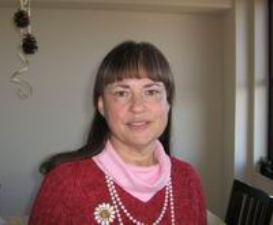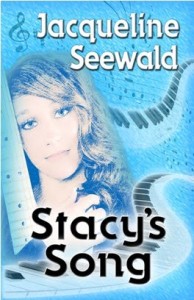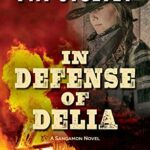My guest today is Jacqueline Seewald, who writes women’s romance and historical romance as well as books for children and young adults. Since most of us who write toy with the idea of writing for a younger audience from time to time, I’m especially pleased that Jacqueline chose this topic for her post.
————————-
Writing Books for Children and Young Adults that Sell by Jacqueline Seewald
 Even before J. K. Rowling’s tremendous success with her Harry Potter series, publishers were frantically searching for fantasy and horror fiction for children and teenagers that they hope will top the bestseller list. Imitation may be the sincerest form of flattery, but it does not insure success as a writer.
Even before J. K. Rowling’s tremendous success with her Harry Potter series, publishers were frantically searching for fantasy and horror fiction for children and teenagers that they hope will top the bestseller list. Imitation may be the sincerest form of flattery, but it does not insure success as a writer.
Books set in the “real” world still have appeal for teens and children. Young readers are not necessarily trying to read books that provide a total escape from reality. Even fantasy books need to be believable, provide an element of reality through character development to which readers can relate.
One of the most important things in writing a successful young adult novel or children’s book is to develop a unique voice. That does not mean that you must write from a first person point of view. However, teenage readers often respond well to a first person narrative.
It is important to create a central character that young readers can both sympathize and identify with. Whether writing realistic or fantasy fiction, if the reader can’t care about the main character, than he or she won’t believe or accept what follows.
Teens as well as younger children enjoy an element of mystery. Every good work of fiction should have a plot that keeps the reader turning the pages, wanting to discover what is going to happen next. It’s important to set up some sort of a question that can’t be easily or immediately answered, a secret of the human heart that must be delved into.
A word of warning: If you are going to write about teens, you must know about them; do some research. Besides raising two teenagers, I taught English and later Library Science. I taught at all levels: the university, high school, middle school and elementary. But most of my years were in the high school. I am accustomed to the way teenagers think, talk and behave. If you are not a teen yourself, talk to teenagers, read their magazines, watch their favorite TV programs, observe how they behave at malls, amusement parks, movie theaters etc.
Get input from your own children. Have them read your writing and critique it. Consider collaborating with your children on the writing of your fiction. I wrote Where is Robert?, a middle grades/YA novel which was published by Royal Fireworks Press in 1997 and is still in print, with help from both of my sons who were teenagers at the time. Both boys contributed to the scenes of high school wrestling, since they both engaged in the sport. I couldn’t have written the book without them. I understand the novel has become something of a cult book for teenage boys who wrestle.
If you want to write for teenagers, you need to understand them. Dig into your own experiences as a teenager. How did you feel? Were you insecure? Did you feel that your parents didn’t understand or love you? In my YA novel, Claire’s Curse, the main character is part of a dysfunctional family. She feels unloved and rejected.
Make it dramatic. Dramatize your story. Don’t show, tell. I’m certain you’ve heard that advice before! How to do this? Create meaningful, realistic dialog for your characters. Each character should be an individual, talking a certain way to reflect a personal point of view, a unique way of thinking. Good dialog leads to action and conflict between people with different viewpoints and goals.
 Settings need to be vividly described so that they seem real. In fact, there’s nothing wrong with using real places for background setting. My three previously published YA’s were set in Central New Jersey, an area very much like the one in which I lived. Verisimilitude is crucial in a teen novel. My latest YA novel, Stacy’s Song, published by L&L Dreamspell, is also set in New Jersey.
Settings need to be vividly described so that they seem real. In fact, there’s nothing wrong with using real places for background setting. My three previously published YA’s were set in Central New Jersey, an area very much like the one in which I lived. Verisimilitude is crucial in a teen novel. My latest YA novel, Stacy’s Song, published by L&L Dreamspell, is also set in New Jersey.
For my children’s picture book A Devil in the Pines, I created a faction story. I used the real setting of the New Jersey Pine Barrens and the legend of the Jersey Devil combined with the fictional story of a little boy who learns how to deal with fear. Afton Publishing has kept this book in print from its publication in 1999.
My advice, don’t write for the market; write the story you need to write. We are all writers. We all have within us a unique, important, wonderful story to share. Get in touch with your inner self. Start putting your ideas on paper. Begin with an outline, then a rough draft with key characters and scenes. When you develop your book, look for depth. Although books for teens can be shorter than those for adults, it doesn’t mean they require less creative thought. Respect your readers; give them quality.
The success of J. K. Rowling’s books has given new hope and inspiration to those of us who write juvenile fiction. No longer can we gripe that children and young adults do not read. If nothing else, the reception the Potter books received has proven that there is still an audience for fiction among young people.
————————-
Many thanks to Jacqueline for joining us today. I may have to spend a little more time on that idea I have for a middle grade mystery series.
Jacqueline is a monthly contributor to the Author Expressions blog. You can find interviews at Book-Club-Queen and Sling Words. Her latest adult novel is a paranormal Regency romance, Tea Leaves and Tarot Cards.






Pat,
Thanks for inviting me to be a guest blogger.
And let me thank everyone who offered a comment!
Hi, Joyce,
My two sons, Dan and Andrew, had everything to do with WHERE IS ROBERT? coming into being.
The book is faction, fictionalized truth. Both boys contributed to the writing as well as providing the true mystery story that was an impetus for the novel. The wrestling scenes were theirs. I merely did an edit on that part. It remains my favorite YA book.
Hi, Jemi,
I do believe that you have to spend time with kids if you’re going to write an authentic book.
As we become adults, our thinking changes. We need a refresher course if we’re going to write for teens and children.
Jacqueline…I want to thank you so much for your guest post and for being here today to respond to comments. You’ve been great.
Jacqueline: Gee, your wrestling book must have been a good one. I’m curious–from a male’s POV?
Thanks for sharing this info about writing for YAs. Lots of good info here.
Great advice! I think it’s so important for writers of YA and MG to spend a lot of time with kids. That way the voice and characters will be authentic 🙂
Thank you for the kind words, Yvonne! I love poetry and used to write quite a bit of it myself. Writing poetry is so demanding and precise that it improves all other kinds of writing. And poets are the best at creating vivid imagery.
I really enjoyed your guest post today. though I don’t write books only poetry I found it extremely interesting.
Thank you Patricia for having Jacqueline on your blog.
Yvonne.
Jane,
Good luck with your children’s book! Hope my ideas do prove helpful.
Thanks for the great advice. It’s given me something to think about as I play with an idea I have for children’s book.
Hi, Pat, Christy, and Joe,
I appreciate your positive comments. I believe as writers we’re all able to reach back to a time when we were children or teens and write about those special experiences and feelings.
Jacqueline,
I think you are absolutely correct in your assessment of what is needed to write a great book for young people. Your comments carried me back to the time when I haunted the library for the next book to appear on the shelves. You are also correct in assuming that there is a children’s book inside each of us, just waiting to be written.
Great advice,Jacqueline. This is a hot field and you’ve given some really good pointers for those who wish to write in this genre.
Hi Jacqueline — I’ve been reading a lot of YA novels lately. I got hooked by reading some of our local authors like Laura Resau and have been branching out ever since. These books are wonderful. My most recent purchase was the first book in The Hunger Games series by Suzanne Collins. Now if I can just find the time to read it…
Thank you, Margot, for reading my article and commenting. I enjoy writing mystery and romance fiction for adults as well as a variety of books for children and young adults. When I was studying for my Master’s Degree in Library Science at Rutgers, I had children’s lit and young adult lit classes with an exceptional teacher who claimed that these books were better written than adult lit and that she preferred them. I don’t know if I’d go quite that far, but there are definitely wonderful novels written for young adults and children. What do you all think?
Patricia – Thanks for hosting Jacqueline.
Jacqueline – You’ve offered some really good advice and insights for writing books aimed at young people. I admit, that’s not my niche. But I have a deep admiration and respect for those who write for young people. Anyone who can create the kind of story that makes children and teens read and read more is a hero in my book.